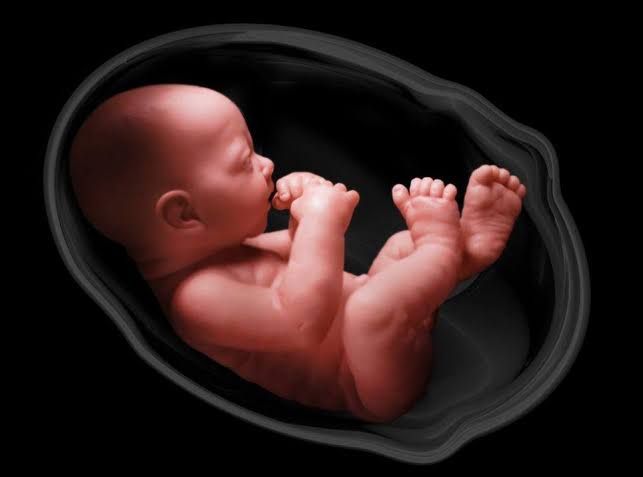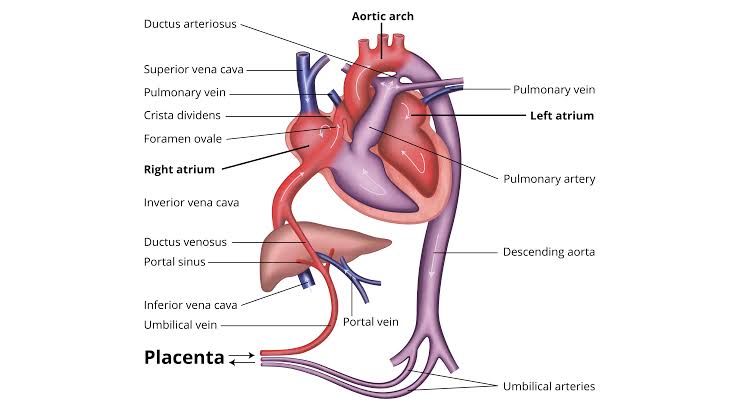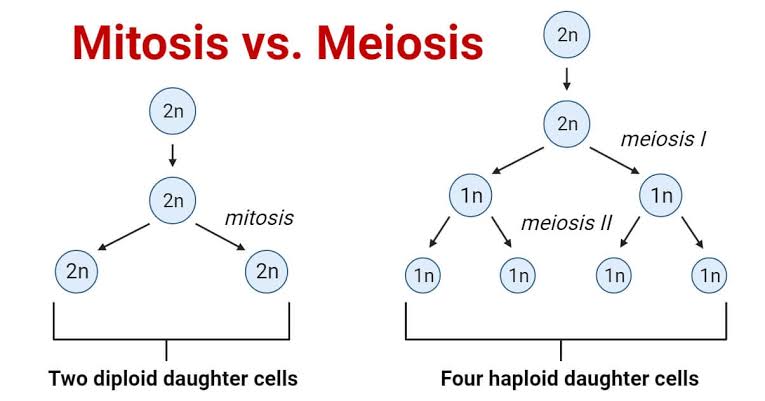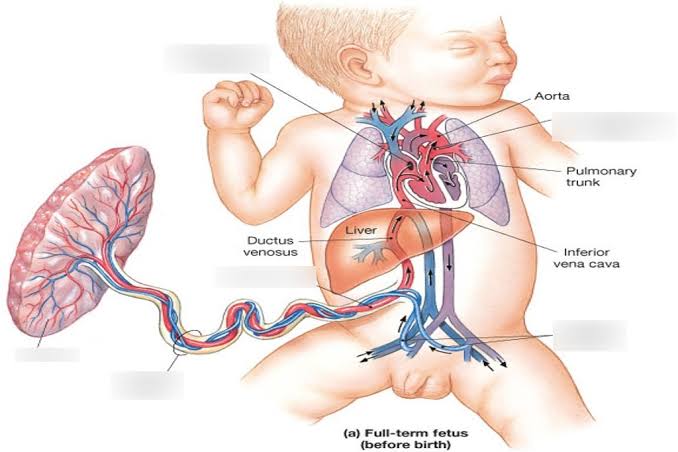
The journey from conception to birth is a marvel of biological precision, marked by distinct developmental stages. Among these, the fetal period stands as a crucial phase, characterized by rapid growth, maturation of organ systems, and the refinement of external features.
Defining the Fetal Period
The fetal period represents the longest phase of human prenatal development, commencing at the start of the ninth week after fertilization and extending until birth (typically around 38-40 weeks of gestation). This stage directly follows the embryonic period, which concludes at the end of the eighth week and is primarily focused on organogenesis – the formation of major body structures.
In stark contrast, the fetal period is predominantly a time of growth and maturation. While rudimentary organs are already in place, the fetal period sees their significant enlargement, functional specialization, and the refinement of their systems. Key developmental processes during this phase include:
- Rapid Increase in Size and Weight: The fetus undergoes substantial growth, transforming from a small, recognizably human form to an infant ready for independent life.
- Differentiation and Maturation of Tissues and Organs: Organs like the lungs, brain, kidneys, and digestive system continue to develop their intricate structures and begin to function more effectively, preparing for their roles outside the womb.
- Body Proportion Changes: The head, which constitutes nearly half of the crown-rump length at the beginning of the fetal period, gradually becomes more proportionate to the rest of the body as the trunk and limbs grow disproportionately larger.
- Accumulation of Fat: Essential for thermoregulation and energy reserves after birth, fat deposition becomes significant, particularly in the later stages.
- Refinement of External Features: The face acquires more defined human characteristics, and external genitalia become distinctly recognizable.
The transition from the embryonic to the fetal period signifies a shift from the formation of structures to their functional refinement and overall growth, laying the groundwork for a viable newborn.
External Body Landmarks from Third Month Till Birth
The external body landmarks observed during the fetal period provide critical insights into developmental progress and often serve as visual indicators for gestational age and overall health.
Third Month (Weeks 9-12):
- Head Dominance: The head still constitutes roughly half of the crown-rump length, but the neck elongates slightly, allowing the head to lift and turn.
- Limb Development: Upper and lower limbs are well-formed. Fingers and toes have developed nails. The limbs begin to move more freely, though these movements are not typically felt by the mother.
- Facial Features: Eyes are widely separated but are still positioned laterally. Eyelids are fused. Ears are low-set but are beginning to assume their characteristic shape.
- External Genitalia: The external genitalia are developed sufficiently to distinguish male from female by ultrasound, though early in this month, differentiation can still be challenging.
Fourth Month (Weeks 13-16):
- Rapid Growth: The fetus undergoes a rapid growth spurt in length.
- Hair Development: Fine, downy hair called lanugo begins to appear on the head and body.
- Facial Refinement: Eyes migrate closer to the midline. Ears are more prominent and positioned higher on the head. Facial expressions may begin to form.
- Skin: The skin is thin, translucent, and reddish due to visible blood vessels.
Fifth Month (Weeks 17-20):
- Further Growth: Length continues to increase significantly, though weight gain is still relatively modest.
- Quickening: The mother typically begins to feel fetal movements (quickening).
- Protective Coating: The body becomes covered with vernix caseosa, a whitish, cheesy substance composed of shed epidermal cells and sebaceous gland secretions, protecting the delicate skin from the amniotic fluid.
- Hair and Nails: Lanugo covers the entire body. Eyebrows and eyelashes appear. Nails continue to grow.
Sixth Month (Weeks 21-24):
- Skin Appearance: The skin is wrinkled and reddish, as subcutaneous fat is still minimal.
- Eye Development: Eyes are fully developed, though still fused shut until around 26 weeks.
- Hand and Footprints: Fingerprints and footprints are distinct.
- Auditory Development: The fetus can hear sounds from outside the womb.
Seventh Month (Weeks 25-28):
- Weight Gain: Significant weight gain occurs as more subcutaneous fat is deposited.
- Skin: The skin becomes less wrinkled as fat accumulates, though it remains reddish.
- Hair: Hair on the head grows longer.
- Eye Opening: Eyelids open, and the fetus can perceive light.
- Testicular Descent (Males): In male fetuses, testes begin to descend into the scrotum.
Eighth Month (Weeks 29-32):
- Fat Accumulation: Subcutaneous fat continues to rapidly accumulate, smoothing out the skin and making the body appear plumper.
- Skin Pigmentation: The skin begins to appear less red.
- Muscle Tone: Increased muscle tone means movements are more coordinated and vigorous.
- Head Position: The fetus often shifts into a head-down (vertex) position in preparation for birth.
Ninth Month (Weeks 33-36):
- Continued Fat Deposition: The fetus continues to gain weight and fat, becoming rounder and fuller.
- Lanugo Shedding: Most of the lanugo starts to shed, though some may remain on the shoulders and back at birth.
- Vernix Caseosa: The vernix caseosa thickens.
- Nails: Fingernails reach the fingertips, and toenails are close to the tips.
Term (Weeks 37-40):
- Full Term: The fetus is considered full-term and mature.
- Appearance: The skin is smooth, pink, and plump due to abundant fat.
- Lanugo/Vernix: Most lanugo has disappeared, and vernix caseosa is present in creases (e.g., armpits, groin) but less widespread.
- Head Circumference: At birth, the head and abdominal circumference are approximately equal.
- Position: Typically remains in a head-down position, deeply engaged in the mother’s pelvis.
These external landmarks serve as crucial indicators for clinicians to assess fetal development, identify potential anomalies, and estimate gestational age.
Various Methods to Estimate Fetal Age
Accurately estimating fetal age is fundamental for prenatal care, guiding screening tests, monitoring growth, and planning for delivery. Several methods are employed, each with varying degrees of accuracy depending on the gestational stage.
- Last Menstrual Period (LMP):
- Method: This is the most common initial method. Gestational age is calculated from the first day of the woman’s last normal menstrual period.
- Calculation: Naegele’s rule is often used to estimate the Expected Date of Delivery (EDD): subtract three months from the LMP and add seven days, then adjust the year.
- Accuracy: Most accurate for women with regular 28-day menstrual cycles and a clear recall of their LMP. Less accurate or unreliable for irregular cycles, recent oral contraceptive use, or unknown LMP.
- Ultrasound Measurements:
- Ultrasound provides objective measurements of fetal size, which strongly correlate with gestational age, especially in early pregnancy.
- Early Pregnancy (First Trimester: 6-12 weeks):
- Crown-Rump Length (CRL): This is the measurement from the top of the head to the bottom of the buttocks. It is the most accurate single parameter for dating, with an accuracy of ± 3-5 days when performed between 7 and 10 weeks gestation.
- Mid-Pregnancy (Second Trimester: 13-28 weeks):
- Biparietal Diameter (BPD): Measurement of the fetal head across its widest part.
- Head Circumference (HC): Measurement around the fetal head.
- Abdominal Circumference (AC): Measurement around the fetal abdomen.
- Femur Length (FL): Measurement of the longest bone in the body.
- Accuracy: While still valuable, the accuracy of these measurements for dating decreases in the second trimester (± 7-10 days) as individual growth variations become more pronounced. They are more useful for monitoring growth than for initial dating.
- Late Pregnancy (Third Trimester: 29-40+ weeks):
- Ultrasound measurements become even less reliable for dating (± 2-3 weeks) due to significant individual differences in fetal growth, genetics, and health. They are primarily used to assess growth, fetal well-being, and presentation.
- Clinical Examination:
- Fundal Height (McDonald’s Rule): The distance in centimeters from the pubic bone to the top of the uterus (fundus) often correlates with gestational age in weeks (e.g., 24 cm usually means 24 weeks).
- Accuracy: Least accurate for precise dating, influenced by maternal body habitus, fetal position, and multiple gestations. Useful for monitoring growth trends.
- Fetal Heart Tones (FHT): Fetal heartbeats can typically be detected by Doppler ultrasound between 10-12 weeks.
- Quickening: The first perception of fetal movement by the mother, usually occurring between 16-20 weeks (earlier for multiparous women, later for primiparous). This is a subjective indicator.
- Assisted Reproductive Technologies (ART):
- For pregnancies conceived via IVF or other ART methods, the exact date of embryo transfer or insemination is known, providing the most precise gestational age determination.
In practice, a combination of these methods is often used, with early ultrasound measurements being the gold standard for confirming or adjusting EDD, especially when LMP is uncertain or irregular.
Factors Affecting Fetal Growth
Fetal growth is a complex process influenced by a multitude of interconnected factors. Deviations from expected growth patterns can have significant implications for a child’s health and development. These factors can broadly be categorized as:
- Maternal Factors:
- Nutrition: Both maternal malnutrition (e.g., insufficient caloric intake, specific nutrient deficiencies like iron or folic acid) and excessive weight gain/obesity can negatively impact fetal growth.
- Health Conditions: Chronic maternal diseases such as diabetes (especially poorly controlled), hypertension, pre-eclampsia, kidney disease, autoimmune disorders (e.g., lupus), and thrombophilias can compromise placental function and fetal growth.
- Substance Use: Smoking (nicotine and carbon monoxide), alcohol consumption, and illicit drug use (e.g., cocaine, opioids) are significant determinants of poor fetal growth.
- Medications: Certain prescription medications (e.g., some anti-epileptics, chemotherapy drugs) can interfere with fetal development and growth.
- Age: Very young maternal age (adolescents) and advanced maternal age (over 35-40) can be associated with increased risks of growth disturbances.
- Infections: Maternal infections, particularly TORCH infections (Toxoplasmosis, Other [syphilis, varicella-zoster, parvovirus B19], Rubella, Cytomegalovirus, Herpes simplex virus), can directly affect fetal growth and organ development.
- Uterine Abnormalities: Structural issues with the uterus, such as fibroids, bicornuate uterus, or cervical incompetence, can restrict growth space or blood supply.
- Socioeconomic Status: Indirectly affects growth through access to nutrition, healthcare, and education.
- Placental Factors:
- Placental Insufficiency: The most common cause of poor fetal growth; the placenta fails to deliver adequate nutrients and oxygen to the fetus. This can be due to infarction, abruption, or impaired development.
- Placenta Previa/Accreta: Abnormal implantation or attachment of the placenta can impede its function.
- Cord Abnormalities: Velamentous cord insertion, single umbilical artery, or cord strictures can compromise nutrient and oxygen flow.
- Placental Infections: Infections affecting the placenta.
- Fetal Factors:
- Genetics: Chromosomal abnormalities (e.g., Trisomy 13, 18, 21), single-gene disorders, or inherited syndromes can lead to intrinsic growth restriction.
- Multiple Gestations: In twin or higher-order multiple pregnancies, competition for resources often results in smaller birth weights for each fetus compared to a singleton, and conditions like twin-to-twin transfusion syndrome (TTTS) can severely impact growth.
- Congenital Anomalies: Major structural defects can divert energy from growth or directly impair development.
- Fetal Infections: Intrauterine infections (e.g., Zikavirus, Cytomegalovirus) can directly damage fetal cells and impair growth.
- Environmental Factors:
- Exposure to Toxins: Maternal exposure to environmental pollutants, heavy metals (e.g., lead, mercury), or radiation.
- Altitude: Living at high altitudes can reduce fetal growth due to lower oxygen availability.
Understanding these diverse influences is crucial for identifying at-risk pregnancies, implementing timely interventions, and optimizing fetal and neonatal outcomes.
Defining Intrauterine Growth Restriction (IUGR)
Intrauterine Growth Restriction (IUGR), also often referred to as Fetal Growth Restriction (FGR), is a clinical diagnosis defined as a condition where a fetus fails to achieve its genetically determined growth potential, resulting in an estimated fetal weight (EFW) or abdominal circumference (AC) below the 10th percentile for its gestational age. This means the fetus is smaller than 90% of fetuses at the same stage of pregnancy.
Key aspects of IUGR:
- Definition: A fetus whose estimated weight is below the 10th percentile for a given gestational age. Some definitions also include a severely affected fetus with an estimated weight below the 3rd percentile, or one that demonstrates growth abnormalities (e.g., decreasing growth velocity, abnormal umbilical artery Doppler studies) even if above the 10th percentile.
- Types of IUGR:
- Symmetric (Proportional) IUGR: Occurs early in pregnancy (first trimester) and affects all fetal organs and parameters proportionally. The head, body, and limbs are all reduced in size. It often suggests a primary problem with the fetus itself (e.g., chromosomal abnormality, congenital infection).
- Asymmetric (Disproportional) IUGR: Occurs later in pregnancy (second or third trimester) and typically affects the abdomen (liver size) more than the head. The head circumference may be relatively spared, while the abdominal circumference and femur length are disproportionately reduced. This is usually due to extrinsic factors, such as placental insufficiency, where the fetus preferentially shunts blood flow to essential organs like the brain, protecting head growth at the expense of body and liver growth.
- Distinction from SGA: It is important to distinguish IUGR from a fetus who is merely Small for Gestational Age (SGA), which also describes a fetus with an EFW below the 10th percentile. However, an SGA fetus may simply be constitutionally small due to genetics (e.g., parents are small) and is otherwise healthy with normal growth velocity and no signs of compromise. IUGR, in contrast, implies a pathological process hindering growth.
- Implications: IUGR is associated with increased risks of perinatal mortality, prematurity, birth asphyxia, meconium aspiration, and neonatal complications such as hypothermia, hypoglycemia, and polycythemia. In the long term, IUGR has been linked to increased risk of chronic adult diseases, including cardiovascular disease, hypertension, and type 2 diabetes (the “Barker Hypothesis”).
Diagnosis of IUGR relies on serial ultrasound measurements to track fetal growth and often includes Doppler flow studies to assess blood flow through the umbilical arteries and other fetal vessels, providing insight into placental function and fetal well-being.







